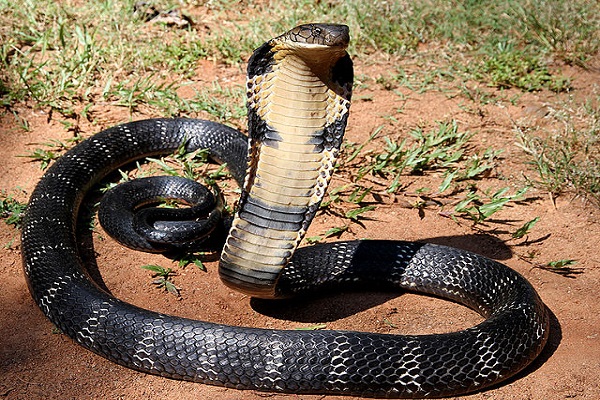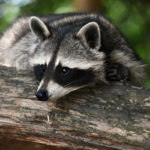According to the World Health Organization, 600 from known 3,000 species of snakes are venomous. Some venoms are strong enough to kill a human within minutes, while others may cause permanent disability in just a few hours. Other snakes, like non-venomous snakes, can pose a danger if they bite or constrict their prey. Humans are no exception.
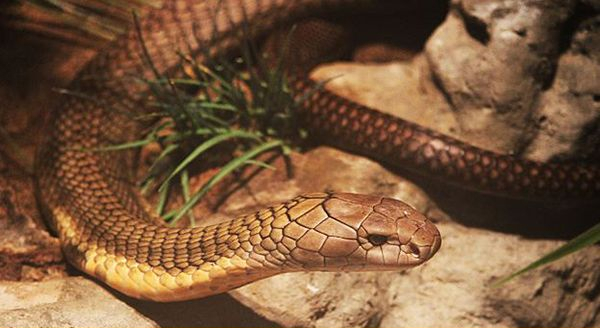
What is Dangerous About A Snake?
The most dangerous thing about a snake is its venom. Venomous species use hollow fangs to inject their prey with venom. This venom can cause a lot of damage to the tissue and organs; in some cases, it can even be fatal.
The King cobra is a dangerous snake, it is the longest venomous snake, and it contains potent venom. Some other species of highly venomous snakes are the Indian cobra and the Eastern tiger snake.
In addition to the venom, deadly snakes also have sharp teeth that they can use to puncture the skins, which can cause an infection, and in some cases, lead to severe blood loss.
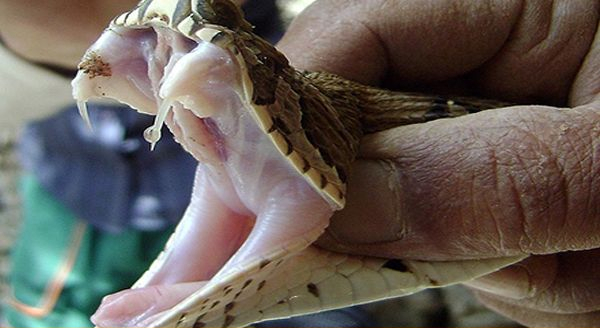
Snake Venom
Snake venom is usually a mix of proteins and other chemicals that can cause severe damage to the body. It works by causing tissue damage and affecting the blood’s ability to clot. Sometimes, it can cause permanent blindness, respiratory failure, paralysis, or death. There are different types of snake venom, but they all share some standard features.
Taipoxin, a complex mixture of neurotoxins, procoagulants, and myotoxins that paralyze muscles and hamper breathing, is present in the venom.
There are two kinds of venomous snakes: those that are strictly venomous and those constrictors. The former has longer fangs and can inject more venom, while the latter have shorter fangs but are more agile and can wrap their bodies around their prey to suffocate it.
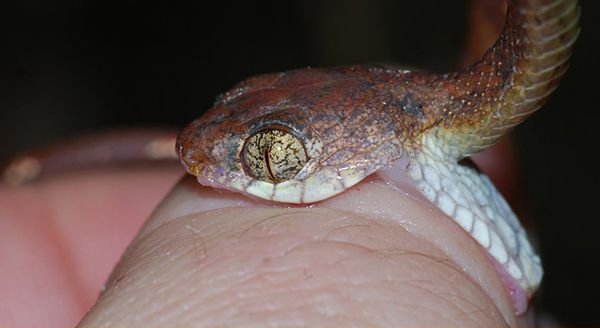
What To Do If You Got Bitten By a Snake?
If you get bitten by a nonvenomous or venomous snake, you first need to stay calm. Then, call for medical help and try to remove any jewelry or tight clothing from the affected area. If you can, remember what the snake looks like and identify it so that the hospital knows what antivenom to use.
What NOT to Do If You Got Bitten
Do NOT try to cut the wound or suck out the venom. Doing so will only spread venom and can make the situation worse. Do NOT try to catch or kill the snake. Leave that to the professionals. And finally, do NOT wait for symptoms to appear before seeking medical help. The sooner you get to the hospital, the better your chances of surviving a snake bite.
How Long Can A Person Survive After A Snake Bite?
The time it takes to recover completely depends on the type of snake bite. Children often recover from an adder bite in one to two weeks. Most adults require more than three weeks, but 25% of patients require between one and nine months.
It also depends on how much of the venom got injected, the person’s age and health, and how quickly they receive medical treatment. If not treated, the venom can cause paralysis, organ failure, and even death. With proper medical treatment, however, most people will recover from a snake bite.
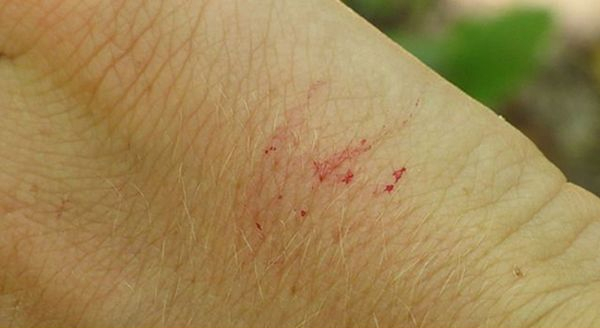
How to Prevent Venomous Snake Bites
Most snakebites occur between April and October when outdoor activities like hiking and camping are popular. Snakebites can be avoided by taking the following precautions:
- Wear long, loose pants and thick leather or rubber boots. Stay away from bushes and trees.
- Never handle a snake, even if it appears to be dead. Snakes that have recently died may still bite as a reflex.
- Before grabbing rocks and wood outside, always check for hidden snakes.
- Don’t go alone in remote areas.
- Leave snakes alone.
Most Dangerous Snakes In North America
The most dangerous snakes in North America are the ones that have the strongest venom and are the most aggressive. These snakes are in every state in the U.S. and often bite people who accidentally intrude on their territory. With modern medicine, however, the number of fatalities from snake bites is relatively low. So be aware of these dangerous creatures and take care when you are out in their environment.
We have compiled a list of the deadliest snakes on the continent for your reference.
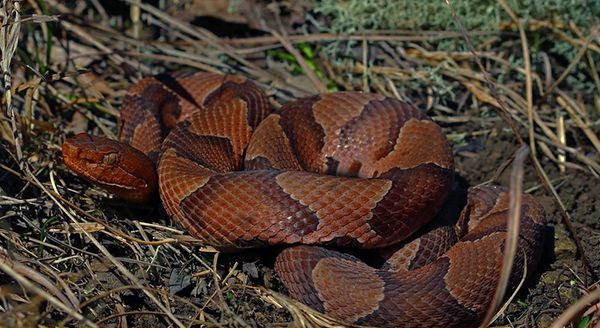
Copperhead
Copperhead snakes have copper-colored heads and a chestnut brown body. It has a diamond-shaped head and a thick body coated in scales with ridges and patches that resemble an hourglass.
Northern copperheads range from the Florida panhandle north to Massachusetts and west to Nebraska. They are found in swampy, rocky, and wooded areas.

Cottonmouth
The cottonmouth snake’s distinguishing features are a large, spade-shaped head, a bright white mouth, and light and dark patterns.
The most typical cottonmouth snake colors are black, brown, or olive; it helps to camouflage with the surroundings.
They are native to the southeastern U.S. and are one of the world’s few semiaquatic vipers (along with the Florida cottonmouth). They spend some time in aquatic and wetland habitats such as swamps, marshes, drainage ditches, ponds, lakes, and streams.

Timber Rattlesnake
They have a body primarily gray, brown, or even pinkish, with dark vertical zigzag bands (often made of black or dark brown colors) contrasting against it. A straight orange or yellow stripe runs along the head and back. There are several recognized color morphs, including the black color morph and the yellow color morph.
The timber rattlesnake is found in the eastern United States in hardwood forests with rugged terrain. They can also be found near dens in lowlands, wetlands, and human habitation.
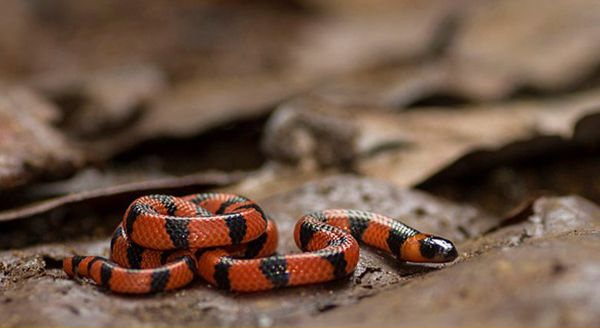
Coral Snake
Coral snakes are venomous elapids that are well-known for being extremely hazardous worldwide. They are one of the few snakes with a famous and unique, personal, and universal rhyme. Coral snakes have one of the most deadly venoms, despite not being nearly as dangerous as some vipers, like the saw-scaled viper or the Mojave rattlesnake.
All coral snakes have different combinations of yellow, black, white, and red rings. Although bi-colored coral snakes are occasionally seen, most of these tri-colored reptiles.
Coral snakes are plenty in North Carolina, Florida, and Texas. They are located in pine and scrub oak sandhill environments, but they occasionally live in hardwood forests and pine Flat Woods that experience seasonal floods.
What to do if you see a snake
If you must move the snake, use a long stick or pole to prod it in the direction, you want it to go. Never try to pick them up, even if you think it is dead, as they can still bite and inject venom.
The right thing to do if you see a snake is to leave it alone. Snakes are not naturally aggressive and usually only attack if they feel threatened. If you give them space, they will likely slither away and do their business.
Need Help With Snakes On Your Property?
If you need help with snakes on your property, AAAC Wildlife Removal is the best company to call. We’ll take care of the problem quickly and efficiently so you can feel safe in your home.
We’ll also ensure that no other snakes can get into your home, so you won’t have to worry about these slithery creatures again. Contact us today to schedule a consultation!
Conclusion
So there you have it, a quick look at some of the dangers of snakes. Be careful out there, and if you encounter one of these creatures, remember to stay calm and call for help. With AAAC Wildlife Removal on your side, you no longer have to worry about these critters.
To learn more about the predators of opossums and their role in the ecosystem, click here: snake dangers.







